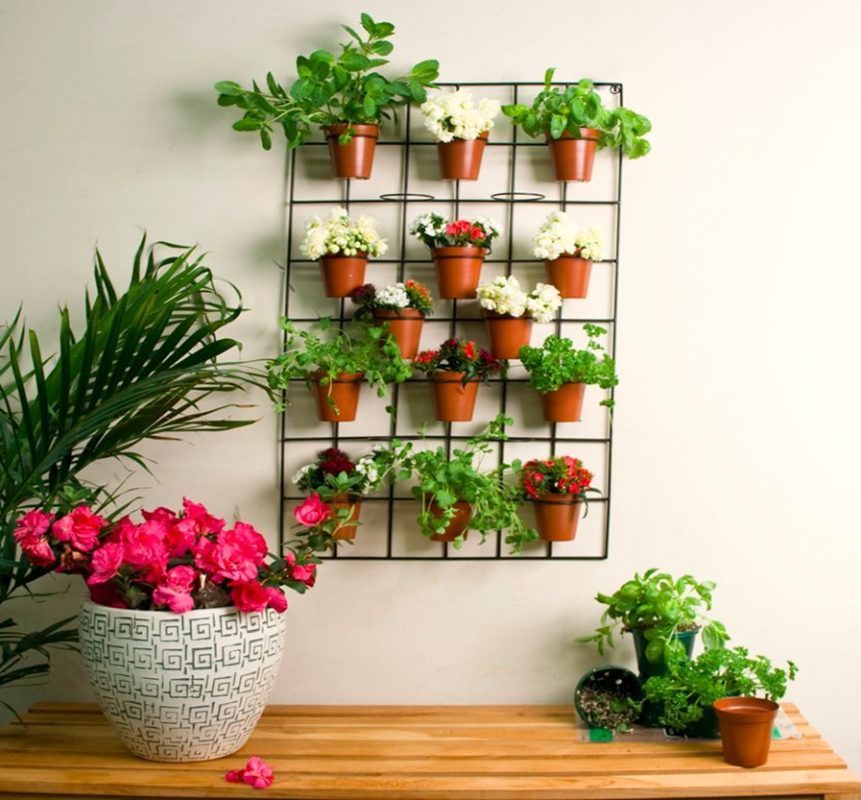Container Gardening
Indoor and Outdoor Container Gardening
There is a certain art to planning and designing an indoor and outdoor container garden. It takes a special combination of creativity, patience, and practicality. Indoor and outdoor living spaces are the perfect places for container gardening. Whether you are planning a small urban gardening area or a large landscape garden covering several acres of land, there are some important things to consider when planning your project.
Learning Indoor and Outdoor Container Gardening
Indoor and Outdoor Container Gardening is a popular and easy way to add lovely color and flavor to your home gardens, patio or other landscaping areas. Container gardening is the process of growing plants in small pots that can be moved from one area of your yard to another. Most people get tired of the same-old garden bed they have been growing vegetables in for years. By learning about Indoor and Outdoor Container Gardening, you will be able to create beautiful gardens that will provide you with lots of fun, enjoyment and satisfaction.
Identifying the Size of Container
Identify the size of your container before starting You must know the specific needs of each plant and be sure to accommodate each plant’s mature size in your living space. Plants with dwarf characteristics should be considered with care as their roots may grow to be very long. Determine how many plants you will need to keep the space in top shape and choose plants with similar mature sizes.
Identify Best Places for Plants
Many people who are new to Indoor and Outdoor Container Gardening do not know where to place their containers when they are ready to begin their gardening. One great way to know where to place a container is to imagine the location where the plant will be in later in the year when the foliage is fully developed. If you are unsure of where to place a container do research on the internet or go to a nursery to view photos and learn more about the plant. Placing the container in an area that receives full sunlight during the day and then remaining in a shady area at night is a great way to get the plant to adapt to its new environment. Do not move the container during daylight hours if you are unsure of the placement.
Make a to do List
Create a list Do an inventory of what you already have growing in your garden, including pots, planters, etc. Make a list of your priorities when it comes to container gardening. For example, plants that require the most work and maintenance should be placed on the bottom of the list. This will help to ensure that you do not plant something that will be difficult to maintain or that is not desired because of its small size. Also, keep items that are not doing as well in pots or containers.
Consider the Preferences of your Family Members
Be choosy Carefully consider the type of plants that you wish to plant. Each plant will demand a certain amount of space in a container. If you cannot accommodate plants of a certain size, then it may be better to use a larger pot or container. Additionally, keep in mind the preferences of your other family members when it comes to plants. Make sure that everyone agrees before moving forward with the gardening project.
Be open-minded Listen to your family’s preferences when it comes to plants. You will find that they have their own ideas, but you need to listen to them. Also, take into consideration what your indoor and outdoor living space will look like before making any firm decisions. You do not want to be stuck in a design concept that you have not completely come up with.
Create a Plan and Budget
Be prepared by creating a plan and a budget. This will help to ensure that you are able to stick within your allocated budget. You will also need to keep track of each plant’s progress. If a plant is not growing as well as you would like, you should know this information so that you can address the problem quickly. Containers can often be more difficult to maintain than a stand-alone garden.
Use your Creativity
Be creative Take your creative juices to a new level when gardening in containers. Try using features that are already present in the space that you have designated as your gardening space. For instance, you could set up an outdoor water feature that will catch and store water for the plants. Or, create a hanging garden light using an old lamp stand.
Keep track of your progress with photographs. This will help you visually see your work over time. Many people get bored quickly with container gardening. Therefore, it is important to be patient and enjoy your experience. With constant photography, you will soon discover how much fun it is.
Taking Care of Plantings
Once you have planted your seeds or seedlings in the containers it is time to water them frequently. You should water your containers every two weeks during the growing season and once or twice a month throughout the rest of the year. You should make sure to check the bottom of the pots and empty them before re-potting the plants. Your Indoor and Outdoor Container Gardening should be fun and rewarding for you and your family. It can even be a source of money if you have a large number of plants you need to maintain.

